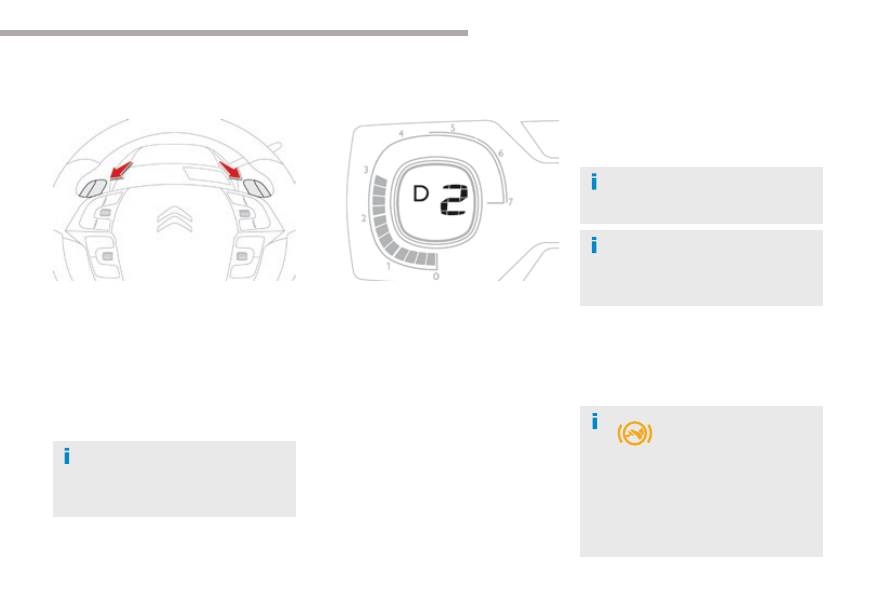Citroen C4 Picasso (2017 year). Instruction - part 10

143
4
Driving
C4-Picasso-II_en_Chap04_conduite_ed02-2016
+.
Control paddle for changing up, to the right
of the steering wheel.
F Pull the "+
" paddle towards you to change up.
-.
Control paddle for changing down, to the
left of the steering wheel.
F Pull the "-
" paddle towards you to change
down.
Steering mounted control paddles
The steering mounted control paddles
cannot be used to select neutral or to
select or come out of reverse.
When you move the gear selector, the symbol
corresponding to its position is displayed in the
instrument panel.
P.
Park.
R.
Reverse.
N.
Neutral.
D.
Drive (automatic operation).
1 to 6.
Gears engaged in manual operation.
-.
Invalid value in manual operation.
Displays in the instrument panel
Moving off
F
With your foot on the brake pedal, select
position P or N
.
F
Start the engine.
If P
is displayed in the instrument panel,
although the gear selector is in another
position, place the gear selector in
position P
to be able to start the engine.
F
With the engine running, press the brake
pedal.
F
Select automated mode (position D),
manual mode (position M) or reverse
(position R
).
If you do not press the
brake pedal to come out of
position P
, this warning lamp
If these conditions are not met, there
is an audible signal accompanied by a
message.
or symbol appears in the instrument
panel, accompanied by the message
"Place automatic gearbox in position P",
flashing of P in the instrument panel
and an audible signal.